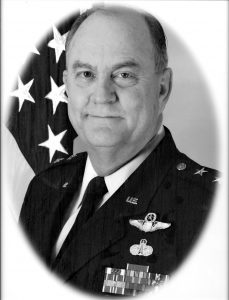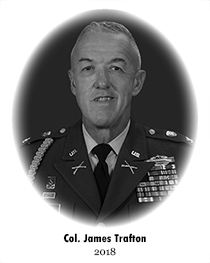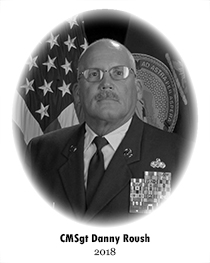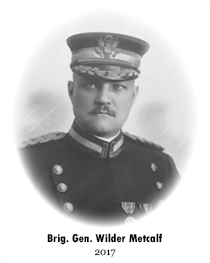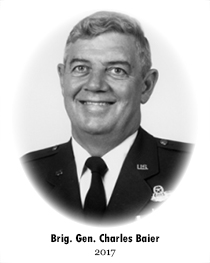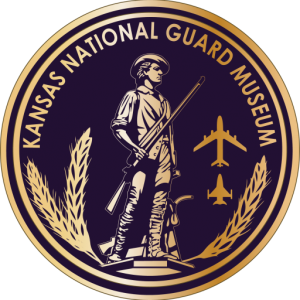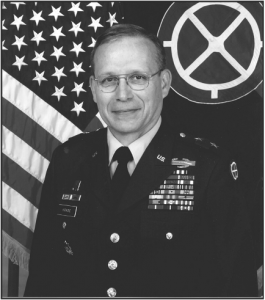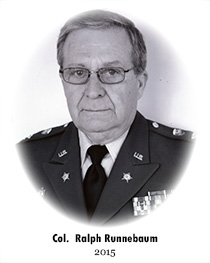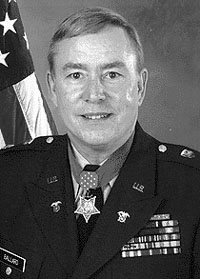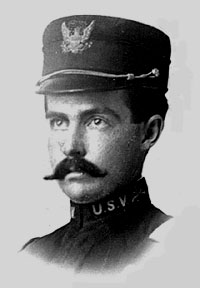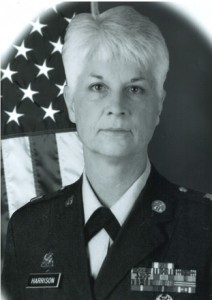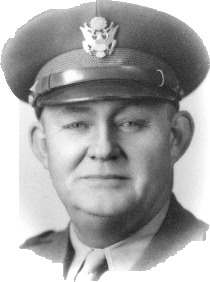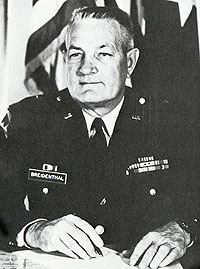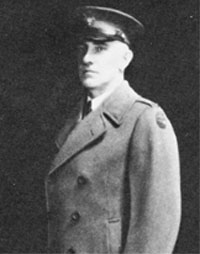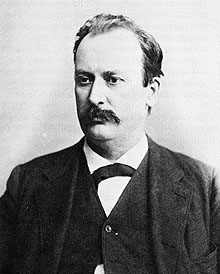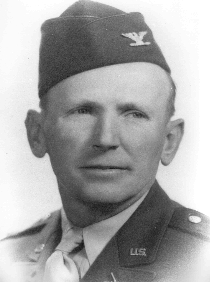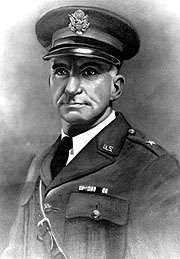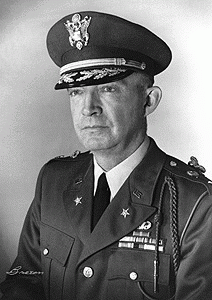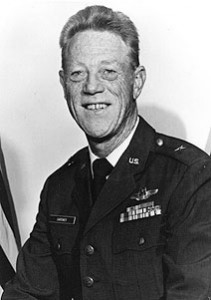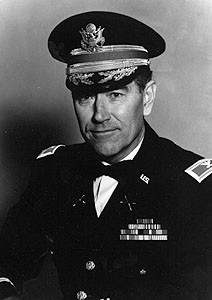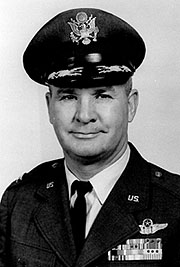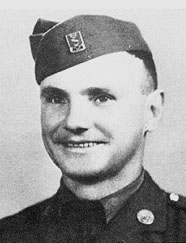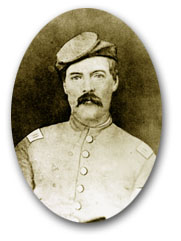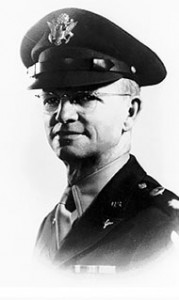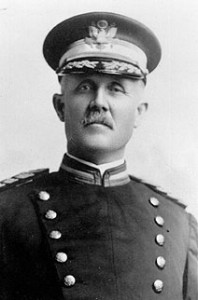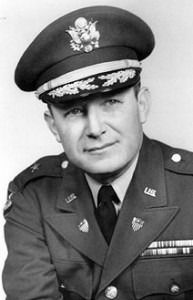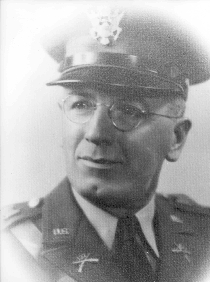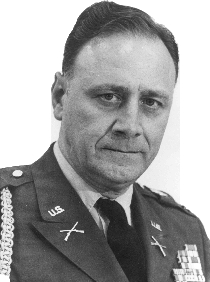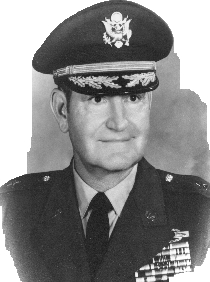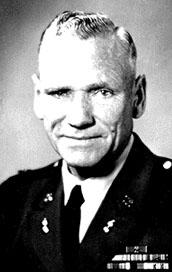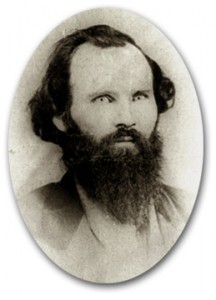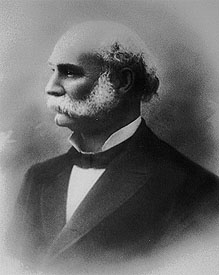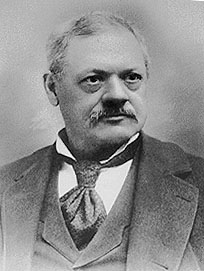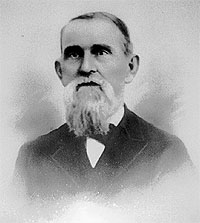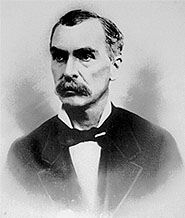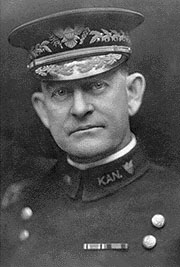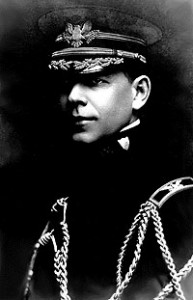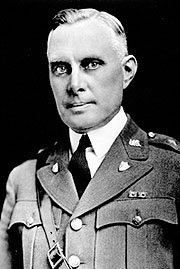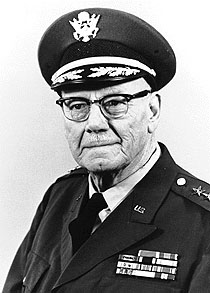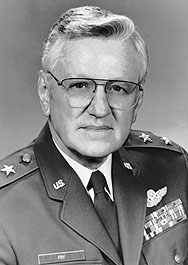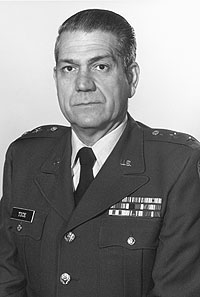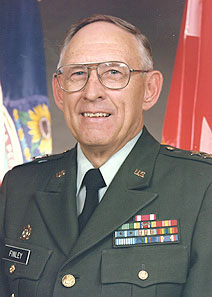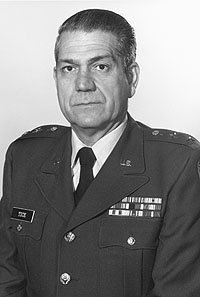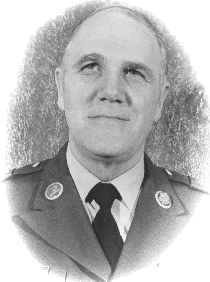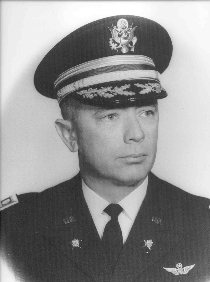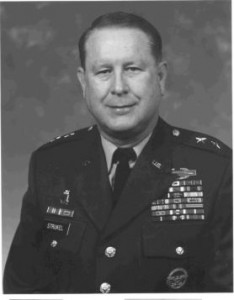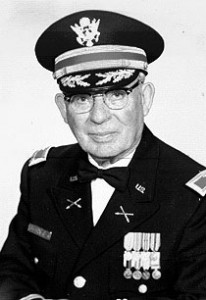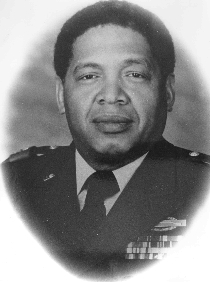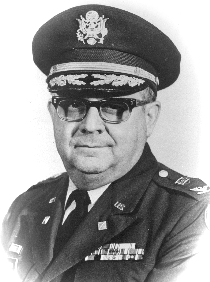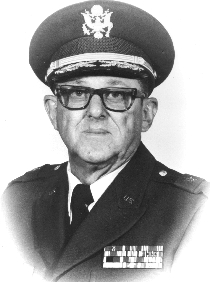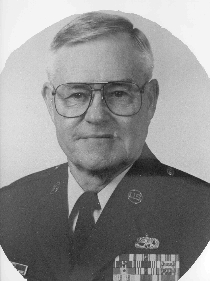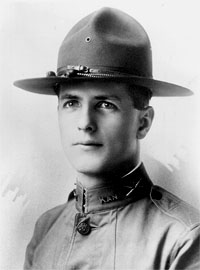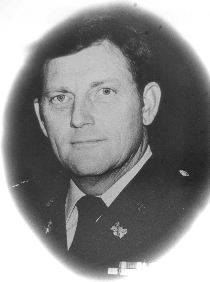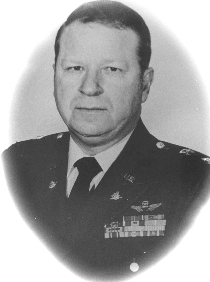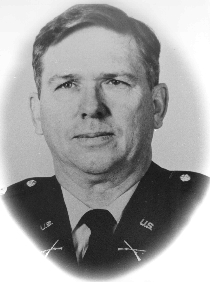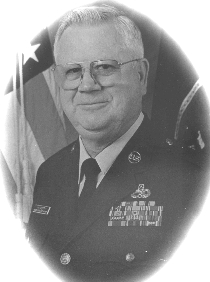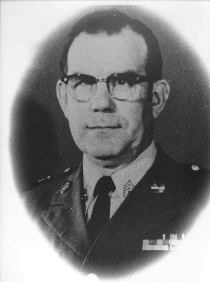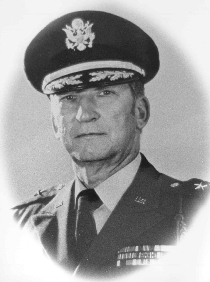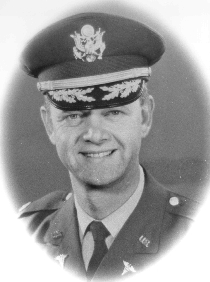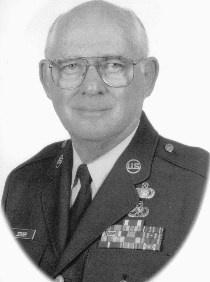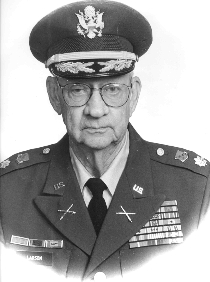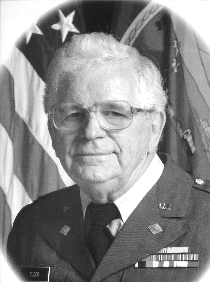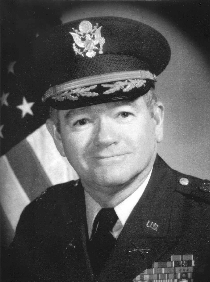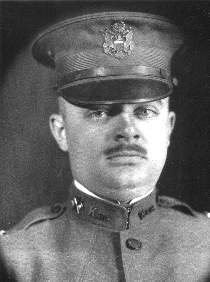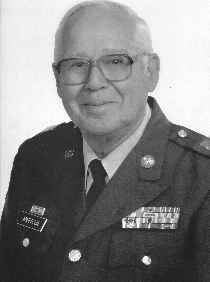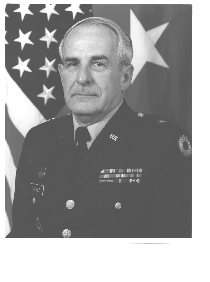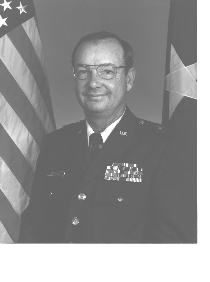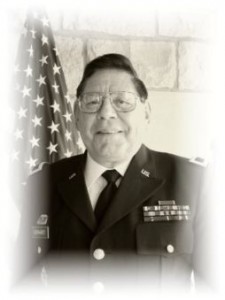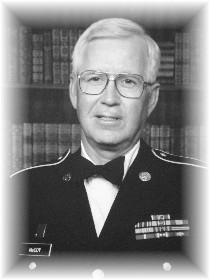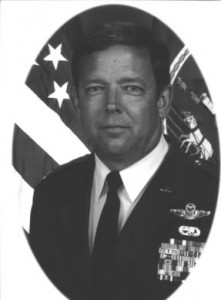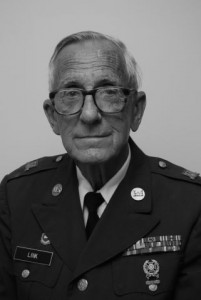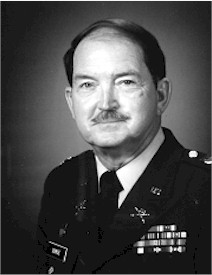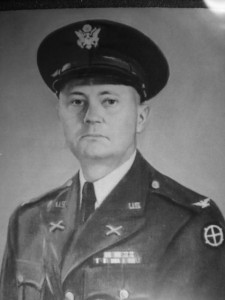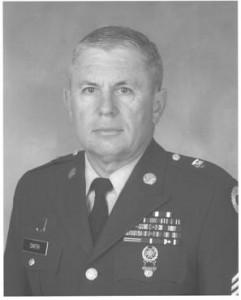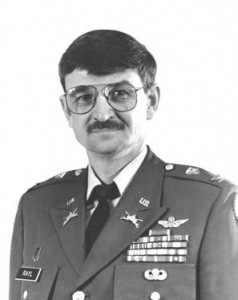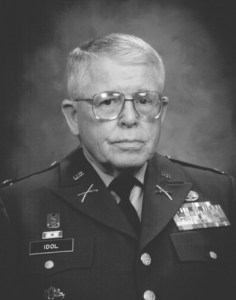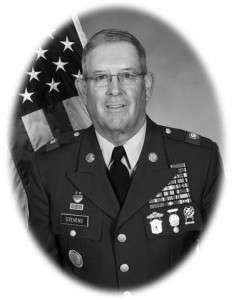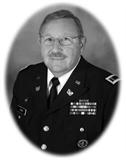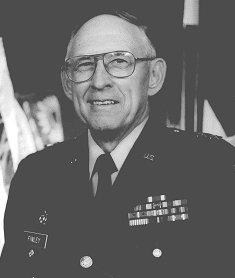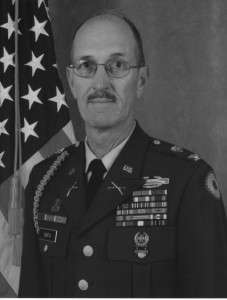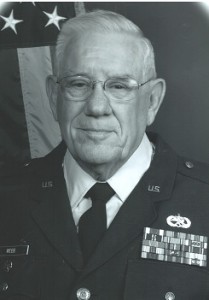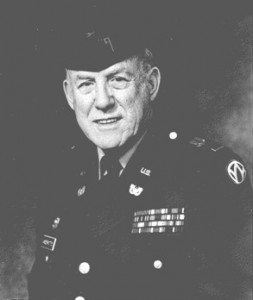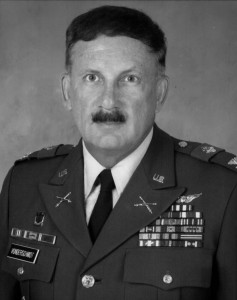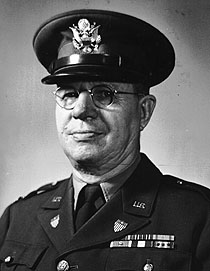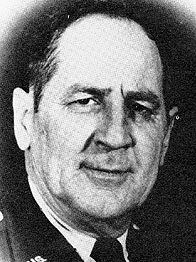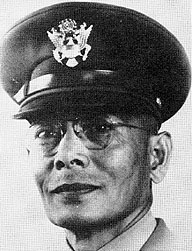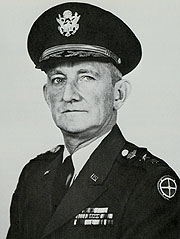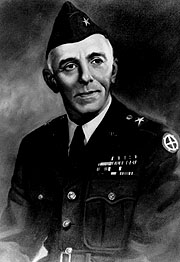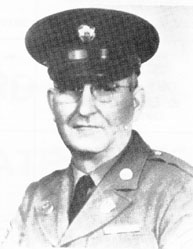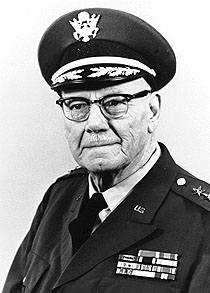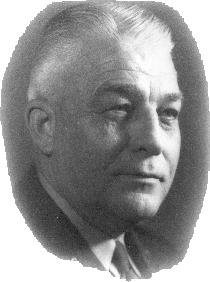The active service of the Fifth Kansas commenced about the 17th of July, 1861, companies A and F leaving Fort Leavenworth for Kansas City, Missouri, about that time. A few days later they formed part of an expedition to Harrisonville, Missouri, under the command of Colonel William Weer, Fourth Kansas Volunteers. After driving out the rebels at that place they returned to Kansas City, company F losing one (1) man, killed. After a few days rest escorted a supply train to Fort Scott, Kansas. At that point companies B, C and E, joined the regiment, and Colonel H. P Johnson assumed command. Company F was there assigned to the Third Kansas, and two companies of the infantry attached to the Fifth. After marching and skirmishing around that post for some time, the regiment was fairly engaged at the battle of Drywood, September 2d, 1861, and had a number of men wounded. The regiment returned to Fort Scott, daily watching the enemy, until he started north, when we followed him; September 17th, 1861, attacked a rebel regiment at Morristown, where, in a gallant charge, the brave Colonel Johnson fell at the head of his men, pierced by nine bullets,. Several men were killed and wounded, among them private Copeland, killed, and Sergeant Wade, and Second Lieutenant Randlett, company A, wounded. We captured large numbers of horses and equipments, camp and garrison equipage, &c. On the same day the regiment moved from Morristown to West Point, Missouri, and from that point marched with the Third and Fourth Regiments to Osceola, Missouri, and attacked the rear of Price’s army, routing them, and destroying large quantities of stores for the rebel army. From there the regiment returned to West Point.
Near the latter part of September, 1861, marched from West Point to Kansas City, the latter place being threatened by General Price, who was at Lexington, where he had captured Mulligan and his command. After several days spent in refitting, scouting, &c., the regiment marched for Springfield, Missouri, to join the army of General Fremont; arrived there early in October, and remained until the army was dispersed by order of General Hunter. It then marched to Fort Scott, Kansas and after resting a few days moved alone, under Colonel Ritchie, upon Carthage, via Lamar. Finding no enemy of importance, the regiment moved back to Fort Scott, halted at that point one day and then marched to Osawatomie, where it remained a few days; then moved back on the road south to Fort Lincoln, halted a few days, and went into winter quarters at Camp Denver, near Barnesville, Kansas. While at Fort Lincoln Lieutenant Colonel Ritchie left the regiment, and for a time it was commanded by Captain James Hunt, company E. He was relieved by Major Somers.
Lieutenant Colonel Powell Clayton assumed, in February following, command. The regiment immediately began to improve under his able management. The notoriously incompetent field officers who have preceded him (always excepting the gallant Johnson) had well nigh ruined the regiment. New life and energy were infused into every department. The regiment soon broke camp, and started upon its career, regarded by all as second to no regiment Kansas has sent into the field. From the first to the middle of March camped about ten miles south of Fort Scott, and near the old battle ground of Drywood. Here the time was spent in drilling, and perfecting the organization of the regiment, until March 17th, 1862, when it marched for Carthage, Missouri, where it arrived on March 19th, 1862. By one of those strategic movements, for which he has since become famous, Colonel Clayton made quite important captures at that place. Learning that the people of the surrounding country were to assemble at that point on the 19th for the purpose of organizing a guerrilla company, he dispatched Captain Creitz, early on the evening of the 18th, to Lamar, with orders to move from that place at daylight, upon Carthage, while the remainder of the command moved down through the neutral lands upon the same point. It snowed violently all of the 19th. Captain Creitz reached the outskirts of the town about two hours in advance of the regiment, the latter having been detained by the slow progress of our train. Captain Creitz, seeing the town full of people, promptly ordered the company to charge. The result was the capture of a large portion of the party assembled, among whom was found a Representative in the rebel legislature of Missouri. From this time until about the 10th of April, the regiment was engaged in threshing and grinding the fine crops of wheat found along the valley of Spring river, and forwarding the flour to the post of Fort Scott. It also took a large number of prisoners, stragglers from the battlefield of Pea Ridge. April 10th, orders were received from General Curtis for the regiment to move to Springfield, where it arrived April 12, 1862.
While at Springfield the time was mostly occupied in perfecting the drill of the regiment, and it made fine progress in tactical evolutions, even exceeding any other cavalry regiment at the post. The severe drilling it here underwent it never forgot, and subsequently was highly complimented for its skillful maneuvering. Moved from Springfield to Houston, Missouri, May 25th, and arrived at the latter place May 27th. After a short stay, during which the regiment drove the guerrilla band of Coleman out of that section of the country, it moved to Rolla, Missouri. June 17th, 1862, a part of the regiment marched to join the Army of the Southwest, leaving Company A, Captain W. F. Creitz, behind to escort the regimental train, laden with valuable quartermaster and ordnance stores. Captain Creitz started about June 25th, to join the regiment, then supposed to be at Batesville; was joined at Houston by a portion of company K, Captain S. R. Harrington, (since Major) and a portion of company D, under Lieutenant Moore, (since Captain). The entire escort at this time numbered one hundred and fifty (150) men. July 6th, met, and in the first charge, overthrew an Arkansas cavalry regiment, at Salem, Arkansas; killed seven (7), and took several prisoners. No loss on our side. July 8th, while crossing Black river, near Jacksonport, Arkansas, were attacked by the Fifteenth Texas Cavalry Rangers, Colonel Smith. The action lasted a little over one hour. For a while the Texans had possession of the train; but our forces succeeded finally in utterly routing them, driving them several miles, killing eighteen, (18) capturing their hospital, many guns, horses, etc. Our loss was one (1) man drowned, two (2) severely wounded, and two (2) prisoners.
This was a gallant fight, and Captain Creitz deserves much credit for its successful issue.
On the day before, the escort captured an entire guerrilla company, (a Captain and seventeen men), with several wagon loads of sutler’s goods, which they had stolen from the rear of the army in advance. Finding that the Army of the Southwest had moved down White river, its detachment followed, and without further incidents of note, (although pursued by a large body of rebel cavalry) reached the army fifty miles from Helena, and rejoined the regiment July 14th, 1862.
Throughout this long and perilous march, every officer and soldier nobly did his whole duty. Captain Creitz, commanding, deserves great credit for the able manner in which he succeeded in eluding and defeating his numerous pursuers, and bringing his little command and entire train safely to their destination. In his official report, he mentions and acknowledges the valuable assistance rendered him by Adjutant T. W. Scudder, Lieutenants Harrington, Morse and Barnes. Division Commander, General Osterhaus, congratulated the regiment upon the remarkable bravery and skill with which the march was conducted.
The detachment had been given up as lost, and the rebels themselves have since admitted it to be a marvel of impudence and success.
From the time of arrival at Helena until midwinter, the regiment was engaged weekly, and almost daily, in skirmishing with the rebel cavalry hovering around that post, and with invariable success. Major Walker became a terror to all guerrilla bands, capturing from time to time many men and horses.
Some time during the month of December, 1862, a detachment of the regiment under lieutenant Colonel W. A. Jenkins and Major T. Scudder, formed part of General Washburne’s expedition against the Mobile and Ohio Railroad. Shortly after its return to Helena, the regiment moved, with other troops, toward White River, to take part in the expedition against St. Charles and Little Rock, Brigadier Gorman in command. The regiment was ordered to St. Charles, as it was designed to attack that point simultaneously with General McClernand’s movement against Arkansas Post. Owing to the high water, it was found impossible to reach the river at that place, and Colonel Clayton turned the head of his column toward Clarendon, a small town twenty-five or thirty miles higher up the river. It being necessary to establish communication with the fleet, with which we were to co-operate, Major T. W. Scudder undertook the job. Accordingly, upon a dark, stormy night, he started with two (2) men from company D, (Sergeant Baird and private Ringer) in a little skiff, and after nine long hours reached the fleet, nearly frozen , the rain having turned into a severe snow storm. In that time he had traveled forty-five miles, passed two rebel picket posts, and a Union gunboat doing guard duty, without discovery. St. Charles had already been evacuated, and the garrison sent to Arkansas Post. In a few days the regiment again returned to Helena.
May 7th, 1863, the regiment formed part of an expedition, under Colonel Clayton, sent out by Major General Prentiss to scout the country west and north of Helena, and destroy forage and other supplies, to prevent the same from falling into the hands of the rebel army, should it move that way. The regiment moved out on the Little Rock road, toward Clarendon; thence north to Bayou de Vieu, where it found an infantry force under Colonel (since General) Rice. From there the cavalry started north. The Fifth Kansas and Fifth Illinois, all under the command of Lieutenant Colonel W. A. Jenkins, of the Fifth Kansas, crossed the La Aquille River. Colonel Clayton halted with the Indiana Cavalry, and took up position to guard the bridge until our return. Camped on the evening of the 9th at Taylor’s Creek, eight miles from the bridge. The following morning moved south between the St. Francis and La Aquilla rivers, hoping to overtake the rebel Colonel Dobbins and command. After marching about twenty miles General Marmaduke was discovered in our rear, and between us and Colonel Clayton. Colonel Jenkins turned back, hoping to be able to cut his way through. After four o’clock p. m., the Fifth Kansas engaged a brigade of Texas Rangers, under Colonel Carter. The brigade was composed of four of their best regiments, and numbered about one thousand six hundred (1,600) men, with two pieces of artillery. At this time the Fifth Illinois was five miles in the rear, feeding, leaving the Fifth Kansas alone to oppose this vastly superior force. Nobly the gallant old regiment, under the intrepid Jenkins, sustained its reputation. With undaunted front it met and overthrew three furious charges of as many regiments, and the fourth seeing the fate of those preceding, broke before our line was reached. During this furious fight we had driven them about one-half mile; they then opened with their artillery, and having taken a strong position, Colonel Jenkins deemed it imprudent to assault them. The regiment held its ground until darkness ended the conflict. By this time the Fifth Illinois had come up. Our loss was very light, only one (1) killed, and ten or twelve wounded, among them Captain Moore, company F, severely through the hand. Every officer and man did his whole duty bravely. The rebel loss was much larger than ours; they had one lieutenant killed and six officers wounded. The exact number of their loss we never knew. Under cover of the night the regiment withdrew to La Aquille, here Major Scudder and Captain Barnes succeeded, with great labor, in constructing a bridge from some neighboring houses, upon which the entire command crossed. At nine a. m. the enemy appeared on the opposite bank. Having the horses safely over, the men moved back on foot to give them battle. After the exchange of a few shots, the enemy fell back, and our troops resumed their march to Helena unmolested, rejoiced there to find the gallant Colonel Clayton, who had a severe contest with another brigade of the enemy, and escaped from him in much the same manner. The Fifth Kansas, by its stubborn bravery, ably led by Lieutenant Colonel Jenkins, alone saved the entire command from capture. On this raid there were destroyed vast quantities of corn, bacon, &c.
After the return of the regiment, nothing of note occurred until May, when a portion of the regiment, under Major Walker, was attacked about seven miles from Helena, at Polk’s plantation, on the Little Rock road, by a largely superior force of rebel cavalry. After a short resistance, the Major was overpowered, and his force driven in confusion toward town. He finally rallied them about two miles back, and the enemy rearing reinforcements from town. moved rapidly away. Our loss was seven or eight killed and two commissioned officers and twenty men taken prisoners. From this time until July 4th, 1863, the regiment was engaged in the usual routine of camp duty, picketing, scouting, &c.
At the battle of Helena the regiment occupied the extreme right. With it was the First Indiana Light Battery, and four guns of the Dubuque Battery. Here our troops fought from sunrise until two o’clock, resisting with brilliant success the onsets of Marmaduke’s cavalry division, several thousand strong, silencing and dismounting their guns, and finally driving them completely from the field with heavy loss. The loss of the Fifth was four (4) killed and six or eight wounded. Captain Creitz and Lieutenant Jennings were slightly wounded while advancing against a battery.
Two days later, the Fifth Kansas and First Indiana, following the rear of Price’s army, captured one hundred and thirty (130) prisoners, mostly wounded. August 15th, started from Helena for Little Rock, the regiment forming part of General Steele’s Arkansas expedition. Moved from Duvall’s Bluff September 2d, and camped that night at Brownsville. September 4th, Clayton’s brigade (Fifth Kansas and First Indiana) were ordered on a reconnaissance to Bayou Meteo. Brigadier General Rice, with a brigade of infantry, as support, followed. Arrived there same day, drove in the enemy’s outposts, threw a few shells after and among them, camped for the night, and returned to Brownsville next day. September 7th, moved with the rest of the army toward the Arkansas river, and reached it at Ashley’s Mills, twelve miles below Little Rock, September 8th. On the next day was ordered to reconnoiter the enemy’s position on the north side of the river. About three miles from camp, fell upon their pickets, and drove them, with light skirmishing, until they took refuge behind their works. The appearance of our troops created a great commotion in Little Rock, (which was in plain view) the long roll was sounded, and infantry and artillery hurriedly moved to their positions. Our forces stayed long enough to enable the engineers to make a sketch of the works, then slowly and quietly withdrew. September 10th, after a heavy cannonading, a portion of the army of General Steele crossed the river and moved upon Little Rock, while the remainder moved by the north bank in the same direction. By this movement the rebel position was turned, and about 4 o’clock p. m. the old flag was once more floating from the United States arsenal.
September 14th, a portion of the regiment was ordered to Pine Bluff. Lieutenant Colonel Jenkins moved from Little Rock late in the morning, and reached Pine Bluff the same night, having marched fifty miles. A few days after, Colonel Clayton was ordered to assumed command of the post, and Major Scudder, with the remainder of the regiment, marched to the same point. A few days later, the other regiment of Clayton’s brigade (the First Indiana) joined us. About the 1st of October, 1863, Colonel Clayton moved, with three hundred (300) men and four pieces of light artillery, to attack General Marmaduke’s outpost at Tulip, starting at night from Pine Bluff. By continuous marching for ninety miles, he placed his force between the main body of the rebels and Tulip, and at 4 a. m. of the second day fell upon their camp. The Fifth Kansas, led by Lieutenant Colonel W. A. Jenkins, made a furious charge through their lines, while at the same moment the artillery opened upon their camp. The entire rebel force, six hundred (600) strong, fled in dismay, leaving nearly everything behind them; their tents, wagons, quartermaster and commissary stores, besides many stands of arms, sabres, pistols, and one battle-flag, fell into the possession of the regiment, which marched back to Pine Bluff in triumph, without the loss of a man. Colonel Clayton was slightly wounded by a glancing shot.
Everything went on quietly at the post until the morning of October 25th, 1863, when it was attacked by General Marmaduke, with three thousand (3,000) men and twelve pieces of artillery. To oppose him, Colonel Clayton had about six hundred (600) men and nine pieces of light artillery. The action lasted from 9 a. m. until 3 p. m., when the rebels, beaten at all points, withdrew, and left Clayton and his “gallant six hundred” masters of the field. The rebel loss was about on hundred and fifty (150) killed and wounded, and thirty (30) prisoners. Our loss was thirty-seven (37), of which twenty-seven (27) belonged to the Fifth Kansas. Major Scudder, commanding the regiment, was slightly wounded in the knee. Colonel Clayton was highly complimented for his brave defense, and well he deserved it. Few officers would have held out as he did. Lieutenant F. M. Clark, of the Fifth, met the bearer of the flag of truce in the morning, with a summons to Colonel Clayton to surrender, and told him there was no need to go to the Colonel; that any one who knew him could answer for him, that he never surrendered. Accordingly the bearer returned, and the battle began.
January 19th, 1864, was fought the engagement of Branchville, in which portion of the Fifth Kansas, First Indiana and Seventh Missouri Cavalry defeated Shelby’s forces.
January 21st, 1864, we were again in motion, eighteen miles out on the Camden road. Colonel Clayton halted with the Seventh Missouri Cavalry, and Fifth Kansas and First Indiana batteries. Major Scudder, with the Fifth Kansas and First Indiana, was sent to Mount Elba, on the Saline river, where it was rumored an infantry force was crossing. He found and surprised a cavalry picket, killed one (1) Lieutenant, one (1) man, and twenty-five horses, and burned a large quantity of forage. Found no force at Mount Elba except a few cavalry, and from that point returned to Pine Bluff.
March 28th, 1864, Colonel Clayton, with a portion of his troops moved out to give battle to General Dockery, who had a brigade at Monticello. Our force consisted of about one thousand (1,000) men of all arms. General Steele, at this time, was at or near Camden. Colonel Clayton intended to drive Dockery out of the country lying between Bayou Bartholomew and the Saline river. To deceive the rebel general as to the real movement, he dispatched Lieutenant Drover Young, Fifth Kansas, on the direct road to Monticello. Lieutenant Young drove in the rebel pickets, and at night built numerous fires, as if there was a large force with him. During the night he quietly withdrew, and joined the main body under Colonel Clayton, at Mount Elba.
March 29th the cavalry moved out toward Camden, leaving the infantry and a portion of the artillery to guard the crossing. The cavalry halted a few miles further on, and camped, watching all approaches to the crossing leading north and west. Lieutenant Young, Fifth Kansas, and Greathouse, First Indiana, were sent with one hundred (100) picked men to destroy the enemy’s bridge at Long View, about forty miles down the river. General Shelby, who, the evening before, lay with his brigade ten miles above, rapidly fell back towards Princeton. Early on the morning of March 30th, scattering shots were heard toward Mount Elba ford, and finally the firing grew quite brisk. Colonel Jenkins was ordered to take the Fifth and move back, and ascertain who it was, while the entire cavalry prepared to follow. The Colonel arrived just as the infantry pickets were being driven in on all sides, assumed command, and the battle began. The Eighteenth Illinois infantry, with two guns, Fifth Kansas, with one gun of the First Indiana Battery, were on the right. The Fifth Kansas Cavalry dismounted in the centre, Twenty-eighth Wisconsin infantry on the left. The enemy, who proved to be General Dockery’s command, largely outnumbered us, and advanced boldly to the attack with terrific yells. Our troops greeted them with a tremendous fire from all arms at less than seventy-five yards; the howitzers poured canister and shrapnel into their ranks with great rapidity. Sergeants Davis and Wade, Fifth Kansas, working their guns splendidly. The rebel line came bravely on, but the fire of our brave men was steady and terrible. The rebels halted, wavered, broke and fled, leaving the ground strewed with their dead and wounded. The Fifth Kansas instantly followed, fell upon their disordered lines, and drove them beautifully. About ten miles out the regiment was overtaken by the First Indiana and Seventh Missouri Cavalry, with Colonel Clayton at their head. The Colonel ordered the Fifth Kansas to charge, himself leading, hat in hand. With a wild yell the old regiment dashed at the enemy, and was met by a heavy volley, but never faltered. The next moment it was upon then, and the rebels fled, scattering in every direction. For five miles the exciting chase continued, and was then abandoned. The whole affair was brilliant in the extreme. Great credit is due Lieutenant Colonel Jenkins for the handsome manner in which he handled his force, and drove the enemy before Colonel Clayton arrived. Colonel Clayton, in his special report, highly compliments Lieutenant Colonel Jenkins, for the able manner in which he repulsed and routed the rebels, and Majors Walker and Scudder for their vigorous pursuit of the flying foe. Just as the engagement closed, Lieutenants Young and Greathouse returned, having succeeded in destroying the bridge, capturing Dockery’s wagon train, and two hundred and sixty (260) prisoners, two battle-flags, etc., without the loss of a man. The Federal loss in the action at Mount Elba was two (2) killed, two (2) slightly wounded, and eight (8) taken prisoners. The next day the command returned to Pine Bluff, with three hundred and eighteen (318) prisoners of war, three hundred horses and mules, and one or two hundred wagons.
The balance of Dockery’s force fled the country between the Mississippi and Saline rivers, and did not return until after the disastrous campaign of General Banks, when General Steele was forced to retreat, and abandon all south of Arkansas river.
April 25th, a small portion of the Fifth, with one gun, (howitzer) shared in the disaster at Mark’s Mills, when General Steele’s train was captured, and many men killed and wounded. But few escaped; the gun was lost, and Lieutenants Jennings and McCarty taken prisoners, with nearly all of their men. Lieutenant McCarty soon escaped. The others were held at Tyler, Texas, until exchanged. September 17th, the Fifth Kansas and First Indiana, with one gun, under Major Scudder, with detachments from the Seventh Missouri and thirteenth Illinois, the whole (two hundred and fifty) under command of Colonel Erskine, of the Thirteenth Illinois, was fiercely attacked near the Warren cross roads by a brigade of Texas cavalry. The attack was in front and left flank. The Thirteenth Illinois, after a short resistance, broke in confusion, and the whole rebel force was directed against the remainder of the command, (Fifth Kansas, First Indiana and Seventh Missouri) which stubbornly fought them for five miles in retreat. At one time the rebels had nearly captured the artillery, but by the personal exertions of Major Scudder and Lieutenant Quinn, Thirteenth Illinois, it was brought safely off. Lieutenant Jenkins, Fifth Kansas, was at one time cut off from the rest, with his company, but by a dashing charge, cut his way through and joined the others. Our loss was Sergeant Major G. W. Denton, killed, four (4) men severely wounded, and one (1) missing. After that time the regiment was engaged in the usual routine, scouting, picketing, etc., unattended by any incident worthy of note.
T. W. SCUDDER,
Lieutenant Colonel Fifth Kansas Cavalry
(SOURCE: Report of the Adjutant General of the State of Kansas, 1861-’65. Topeka, Kansas: 1896 reprint. Transcription provided by Dale Vaughn, Civil War Roundtable of Eastern Kansas.)

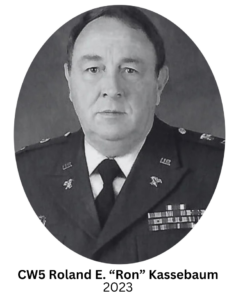 CW5 Roland E. “Ron” Kassebaum was born on February 21, 1946 in Deshler, Nebraska. He graduated from Hebron High School, Hebron, Nebraska in 1964. He attended Fairbury Junior College, Fairbury, Nebraska and the University of Nebraska, Lincoln, Nebraska, and received a Bachelor of Science Degree from the University of the State of New York in 1991. He later attended Liberty University, Lynchberg, Virginia, for courses in accounting and Allen County Community College, Iola, Kansas, for a course in Business Law.
CW5 Roland E. “Ron” Kassebaum was born on February 21, 1946 in Deshler, Nebraska. He graduated from Hebron High School, Hebron, Nebraska in 1964. He attended Fairbury Junior College, Fairbury, Nebraska and the University of Nebraska, Lincoln, Nebraska, and received a Bachelor of Science Degree from the University of the State of New York in 1991. He later attended Liberty University, Lynchberg, Virginia, for courses in accounting and Allen County Community College, Iola, Kansas, for a course in Business Law.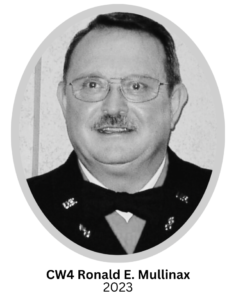 Chief Warrant Officer Four Ronald E. Mullinax was born on August 25, 1946, in Norton, Kansas to Earl and Mary Posson. He was adopted by John and Ada Mullinax. He grew up in Lenora, Kansas, graduating from Lenora Rural High School in 1965. After completing a Denver Automotive Institute training program, Ron worked at Look Body Shop in Norton until 1968.
Chief Warrant Officer Four Ronald E. Mullinax was born on August 25, 1946, in Norton, Kansas to Earl and Mary Posson. He was adopted by John and Ada Mullinax. He grew up in Lenora, Kansas, graduating from Lenora Rural High School in 1965. After completing a Denver Automotive Institute training program, Ron worked at Look Body Shop in Norton until 1968. CCMSgt Valerie D. Benton was born on Dec. 10, 1959 in Racine, Wisconsin, where she spent her childhood. She graduated from Washington Park High School in 1978. Soon after graduation she enlisted in the U. S. Air Force and headed to Basic Training at Lackland AFB, Texas in December of 1978. After completion of Basic training, she attended Technical Training at Lowry AFB, Colorado, and graduated as a Food Service Specialist.
CCMSgt Valerie D. Benton was born on Dec. 10, 1959 in Racine, Wisconsin, where she spent her childhood. She graduated from Washington Park High School in 1978. Soon after graduation she enlisted in the U. S. Air Force and headed to Basic Training at Lackland AFB, Texas in December of 1978. After completion of Basic training, she attended Technical Training at Lowry AFB, Colorado, and graduated as a Food Service Specialist.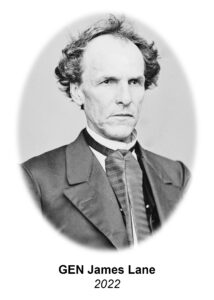 General James H. Lane was a militia leader during the Bleeding Kansas period, the commander of the Kansas “Jayhawker” Brigade during the Civil War, and was one of the first United States Senators from Kansas.
General James H. Lane was a militia leader during the Bleeding Kansas period, the commander of the Kansas “Jayhawker” Brigade during the Civil War, and was one of the first United States Senators from Kansas.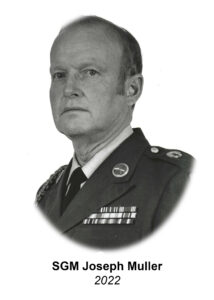 Sergeant Major Joseph T. “Jody” Muller was selected for the Kansas National Guard Hall of Fame for his exceptional service as a citizen soldier in the Kansas National Guard for over 41 years.
Sergeant Major Joseph T. “Jody” Muller was selected for the Kansas National Guard Hall of Fame for his exceptional service as a citizen soldier in the Kansas National Guard for over 41 years. Brigadier General Jonathan P. Small served as The Adjutant General of Kansas from November 1, 2003 to January 4, 2004, culminating a 35-year military career as a distinguished attorney, community leader, citizen-soldier, and military leader. He served as Assistant Adjutant General-Army from 1999 to 2003, and as Commander of the Land Component for the Joint Force Headquarters-Kansas.
Brigadier General Jonathan P. Small served as The Adjutant General of Kansas from November 1, 2003 to January 4, 2004, culminating a 35-year military career as a distinguished attorney, community leader, citizen-soldier, and military leader. He served as Assistant Adjutant General-Army from 1999 to 2003, and as Commander of the Land Component for the Joint Force Headquarters-Kansas.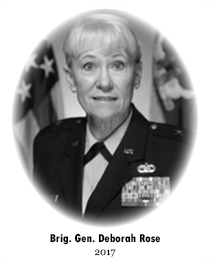 Brigadier General Deborah Rose entered military service with a direct commission into the United States Air Force Nurse Corps in March 1983, assigned to the 184th Tactical Fighter Group. She transferred to the 190th Clinic in December 1985. In October 1990, she deployed to Jeddah, Saudi Arabia, where she served in an Air Transportable Hospital during Desert Shield. In February 1991, she was activated and deployed to Offutt AFB, Nebraska, assigned to the hospital.
Brigadier General Deborah Rose entered military service with a direct commission into the United States Air Force Nurse Corps in March 1983, assigned to the 184th Tactical Fighter Group. She transferred to the 190th Clinic in December 1985. In October 1990, she deployed to Jeddah, Saudi Arabia, where she served in an Air Transportable Hospital during Desert Shield. In February 1991, she was activated and deployed to Offutt AFB, Nebraska, assigned to the hospital.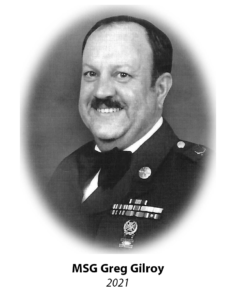 Master Sergeant Greg Gilroy was born on July 25, 1947 at Ottawa, Kansas. He was a lifelong resident of Ottawa, graduating from Ottawa High School in 1965. He then attended Emporia State University during the 1965-66 school year.
Master Sergeant Greg Gilroy was born on July 25, 1947 at Ottawa, Kansas. He was a lifelong resident of Ottawa, graduating from Ottawa High School in 1965. He then attended Emporia State University during the 1965-66 school year.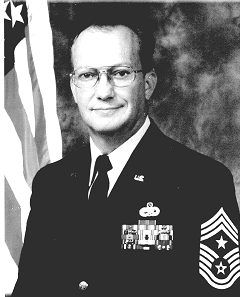
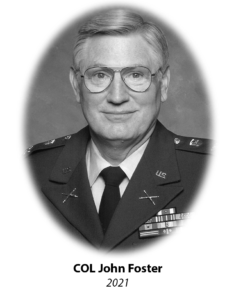
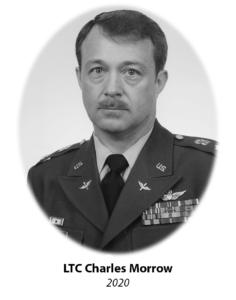
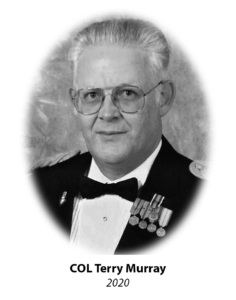

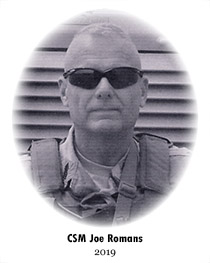
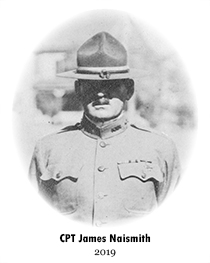

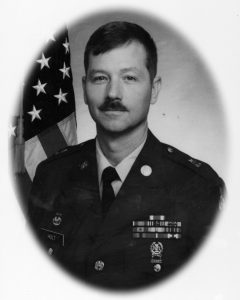 Sergeant Major Lynn E. Holt built his distinguished Kansas Army National Guard career developing strength, retaining Soldiers and insuring Soldiers received proper training. He served from the Detachment through State level. He is known for his ability to recognize Soldier needs at all levels. The same care he felt for Soldiers carried over into his community activities. SGM Holt’s passion for people and their needs exemplifies his true character. He devoted his entire adult life to the betterment of our nation, our state and the Kansas National Guard.
Sergeant Major Lynn E. Holt built his distinguished Kansas Army National Guard career developing strength, retaining Soldiers and insuring Soldiers received proper training. He served from the Detachment through State level. He is known for his ability to recognize Soldier needs at all levels. The same care he felt for Soldiers carried over into his community activities. SGM Holt’s passion for people and their needs exemplifies his true character. He devoted his entire adult life to the betterment of our nation, our state and the Kansas National Guard.